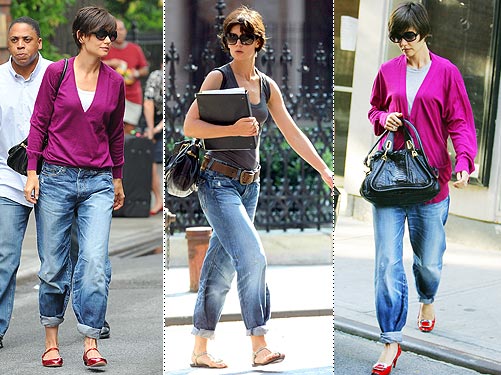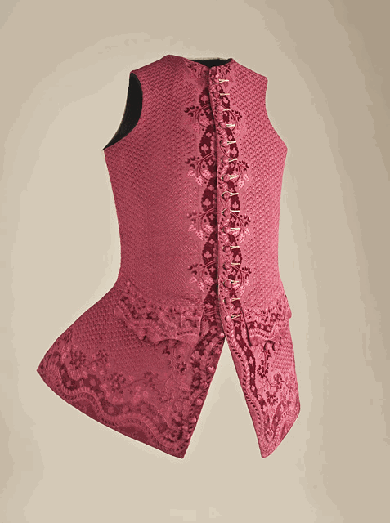In developing a method for
analyzing an object, it is at once necessary to become familiar with classical
examples using such an approach. Interacting with these classical models
informs this unique, tweaked method best
suiting my assigned object: a man’s waistcoat. This methodological approach
leans heavily on Prown’s (1982) seminal work detailing a researcher’s approach
to analyzing material culture. Within this work, Prown offers a clean division
between three stages of object analysis. In an attempt to hone this approach
more directly in line with the assigned object, my methodology includes
suggested addenda from Montgomery (1982), Steele (1998), and Severa and
Horswill (1989). Such alterations intend use a detailed assessment to inform
the deductive and speculative components of this research at the conclusion of
the analysis. Below, an outline identifies those scholars whose work assisted
in the shaping of my multi-step approach to researching this object. As Prown
recommends, this analysis is broken down into three stages: description, deduction, and speculation.
Mimicking these stages serves to maintain Prown’s effective, neat, and detailed
analysis of the object.
Description
To begin, this
stage contrasts from that of Prown in that this stage analyzes the object’s
construction and appearance. Clearly, Prown’s approach performs these two
actions. However, the rationale behind specifically drawing a distinction
between these two descriptive elements focuses the research on elements that
may provide answers about the object’s arraignment and decoration. This is not
to suggest that Prown’s original approach will not answer this question. This
addendum solely aims to offer a cleaner model merging content and formal analyses under the appearance category. Beginning with the object’s construction, Prown (1982)
recommends detailing the observable elements of an analyzed object beginning
“with the largest, most comprehensive observations and progress systematically
to more particular details” (p. 7). Ideally, an analysis of the object’s construction provides details centering on its metrics. This
includes the size, weight, and cut of the objects multiple elements, including
buttons, stitch patterns, and any metal usage. During this stage, Steele (1998)
recommends the observer be thorough in his or her description, but not too thorough because it may “cause a loss of focus on
the object as a whole” (p. 329). In order to maintain a honed focus, the
construction analysis will produce a controlled, yet descriptive, assessment of
the object’s construction.
The
second component of the description stage is an assessment of the object’s appearance. This subsection most closely resembles Prown’s
content and formal analyses. As Montgomery (1982) reminds us, “many facts
[about an object] offer clues” (p. 147). With this in mind, paying attention to
ornamental additions is a necessity. Performing this task could uncover
information about the waistcoat’s craftsmanship—thereby answering questions
about the object’s place in Philadelphia history. Additionally, Montgomery
recommends paying attention to an object’s patterns and colors as they offer
insight about communal trends and historical period, respectively. Further, Severa
and Horswill (1989) note that using material or clothing to cover the one’s
body is one of “the most fundamental components of material culture” (p. 51).
Taken in tandem, these scholars note the important role that understanding
object’s function as and noting ornamental factors in placing the object in a
communal and historical perspective. Further, noting the appearance dually
serves to answer deductive questions in the second stage of this methodology.
Deduction
The
deductive elements of this section pertain to the observer’s intellectual and
intuitive engagement with the object. The observer’s sensory engagement, in
this case, is limited and therefore a majority of the deductive analysis will
rest on the aforementioned forms of engagement. To start, Steele (1998)
suggests that, when dealing with an article of clothing, the observer
“contemplate what it would be like to wear it” (p. 329). From this starting
point, the observer gleans a few pieces of information. Ideally, the observer
gets a sense of how to wear the item and how the article accentuates or hides
parts of the body. Further, the observer may decipher the object’s function or
purpose based on his or her findings. Fleming (1974) notes that discovering the
effective functions of an item should “indicate the ways in which the artifact
became an agent of major change within its culture” (p. 158). To this end, the
intellectual engagement process provides the researcher with questions upon
which to speculate and, eventually, aim to answer with further research.
The
deductive process should not end with intellectual reasoning. The observer
should also deduce any emotional or intuitive response the object evokes.
Montgomery (1982) and Prown (1982) invite researchers to, upon initial
interaction, note his or her triggered emotion. According to these scholars,
the importance of noting one’s initial reaction offers insight about what other
people may feel when reading the object. Further, the documented emotional
reaction may indicate a common cultural reaction about the object. Indeed,
documenting emotion is important, however Severa and Hoswill (1989) remind us
that “the intuitive conclusions must be stated as educated guesses,” regardless
of the education level or experience of the observer (p. 55). For the purposes
of this methodological approach, furtherance of these educated guesses occurs
in the third and final stage, where the observer traverses from deduction to
speculation.
Speculation
The
final stage of this methodology requires the researcher to speculate about the
object. During this stage, the observer aims to form hypotheses or research
questions rooted in the information gleaned during the first two stages of this
process. Steele (1998) recommends developing questions that help “formulate” a
hypothesis about a bigger cultural picture (p. 331). To this end, it would be
helpful to metaphorically take a step back from the narrowed vision used during
the course of this analysis and speculate about why and how a specific cultural
period used the object. During this stage, the observer should have questions
raised about people of a specific culture during this historical period.
Answering questions about the object should, in turn, answer questions about
the people during the period of its fabrication. It is my hope that this
methodology communicates information about the arranged selves of those people
who wore such an object.












